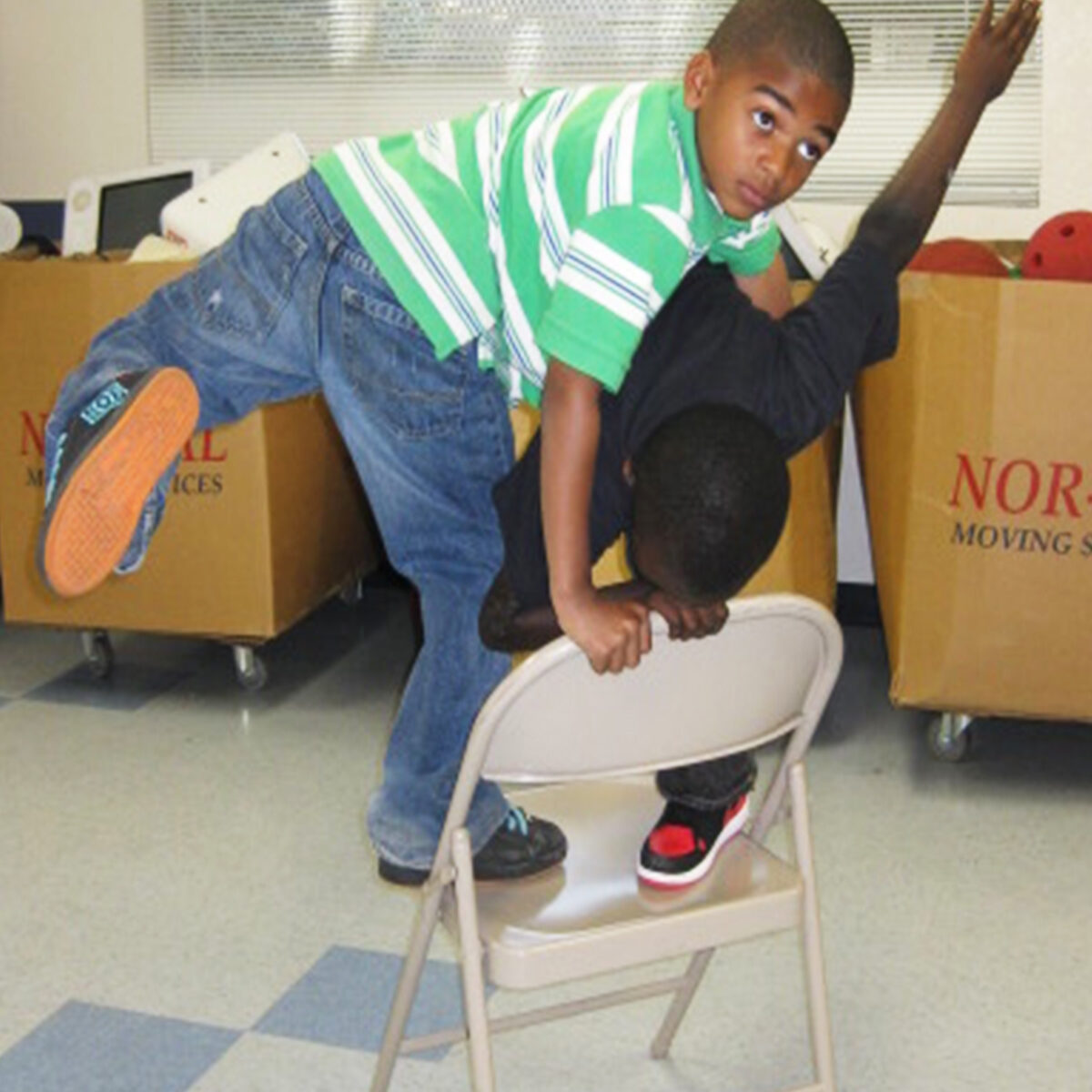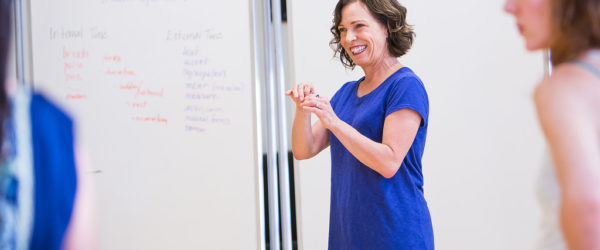Human beings working together in community can shift systems.
Luna helps the field of dance education arc toward justice through our practice-to-policy approach, which includes sharing the findings of our inquiries and research; joining with others to create impact; and relentlessly advocating for inclusion, creativity, and self-determination. Recognizing that our work is situated within systems of oppression and racial injustice, we seek change by paying attention, staying true to our values, and placing children as the future at the center of our work.

Practice-to-Policy
Practice-to-Policy is Luna’s approach to systemic change and one of the three pillars of our Theory of Change. Initially a compilation of grassroots efforts to address inequities found in education, the child welfare system, and children’s services, Luna began to see how our work ripples out to larger changes as California adopted new arts standards and a framework; law-makers re-established the theater and dance credentials; and Governor Newsom’s master plan for early education began to incorporate increasing awareness for social-emotional learning and a play-based approach to learning. Luna met with policymakers to ensure that movement and dance were more central to what a holistic education means. On the ground, Luna modeled relationship-based dance programs for families in the process of reunification and the family court system took notice, and our insistence on and demonstration of inclusion forced schools and school districts to recognize the importance of dance for students in special education. Most recently, California voters passed Prop 28—dramatically shifting the landscape of arts education in California. Luna’s efforts—from the simplest teaching approach to professional learning pedagogy to direct action—center on the values of equity and inclusion.
Systems shift as people shift. As teachers and artists become emboldened to advocate for students’ needs and demonstrate how dance offers opportunities to examine biases, see strengths in children who are often overlooked, and honor diverse expressions of ideas, change happens—first in the classroom, later in the school, and sometimes within a district or state. Luna’s work is to support these practitioners. Our role is to listen deeply to the stories of students, artists, and teachers, observe what is happening on the ground in schools and organizations, and chronicle the information in revised professional learning curricula, expanded programs, and reports to decision-makers. This is what Luna means by practice-to-policy.


Partners for Change
We believe that every child has the right to dance and to express their unique point of view.
Practice-to-policy is achievable in partnership with allies. Luna works with partners in field research—to reveal what is possible when dance programs are centered on equity, inclusion, creativity, and self-determination. Luna builds relationships with partners in public schools, school districts, arts organizations, and social service agencies to expand the possibilities for dance to transform individuals, families, and communities.
MPACT
A chance to make and deepen family relationships through dance

When children express themselves through dance they find home in their body moving through space. Luna has worked with organizational allies who recognize the role the arts play in social justice.

Research
Curiosity is the first step of creative rigor
Dancers as creators, researchers, and change agents have been at the heart of Luna’s work since its inception. Like scientists, approach their work from a place of inquiry. Sometimes a research question is fully formed, but more often curiosity spurs intuition that leads to discovery through rigorous creative practice. Inquiry is the connecting concept of Luna’s Theory of Change because dance often privileges replicating the movements or styles of a master teacher or choreographer versus discovering the new or expanding what is known and possible in our art form. Luna was founded to shift that cultural habit.
Socially engaged art inquiry at Luna is a process that flows through all programming rather than a distinct project separate from the main activities of the organization. For 30 years, young artists have approached dancemaking based on inquiry, and their teachers, artists themselves, were encouraged to dive into observation, reflection, critical self-reflection, and research as part of their daily work. Luna hosts community performances where local choreographers and student choreographers share the stage, presenting their works as research in progress and often describing their investigations in post-show Q & As. These can be found in semester-end Informance, daylong 20 Points of View: A Peek into dancemaking, or in more structured collaborations. Strong collectors of data, Luna faculty share stories, write concept papers, and engage in formal research wherever possible. We are also consumers of research and with an EBSCO database subscription of our own, try to stay informed by reading original research.


In addition to providing space for working artists to deepen their investigative practice, Luna hosts inquiry panels comprised of dance artists who share thoughts on a variety of topics such as dance and disability, dance and equity, what is inclusion in dance, what is community in dance, and in 2023, we hosted Radical Research: Deepening and Disrupting Dance Practice, a panel of BIPOC-Q+ artist-researchers. Luna engages in formal and informal research of our own programs and has created a new program, Teacher/Artist as Creative Practitioner Scholar (TACPS), as an alternative to university graduate school for artists and teaching artists to learn the basics of participant-based, action research.
Luna’s creative inquiry has been presented at state and national conferences and published in InDance, Dance Education in Practice, and Journal of Dance Education. A qualitative case study on MPACT was published in the peer-reviewed journal, International Journal of Arts and Education.
Discover more about:
From Individual to Collective Action
Dance advocacy begins with the individual …
Keep doing your excellent work AND start talking about it. Tell people about what you do, why you do it, and the impact of dance on your students’ lives. People often base decisions on emotion—share what works: help them make decisions based on hope rather than fear.
Working with other teachers, the administration, or the custodial staff at your dance site to find a better dance space for your students is dance advocacy. A bi-annual dance newsletter for the parents of your students is dance advocacy. Asking your employer to support your professional development is dance advocacy. Convening your dance education colleagues in a learning community is dance advocacy. Communicating the value of dance education to a school board member through a letter or in person is dance advocacy. Each of these actions has the potential to shift hearts, minds, and policies in your teaching setting.

Does your city have and arts council or commission? If so, find out what they are doing, set up a meeting, and introduce yourself to the director. Share the work you are doing in your teaching setting. If you work in California, the county offices of education have prioritized arts education for their school districts. If you work in California, the county offices of education have prioritized arts education for their school districts. Find out who your county regional lead is and contact them to get involved with efforts in your region.
Continue to share your work with others, about the importance of arts to keeping students engaged in school, or about dance bringing together body, mind & spirit in action. Keep doing your excellent work AND start talking about it. People often base decisions on emotion—share what works: help them make decisions based on hope rather than fear.
Need support in your advocacy efforts? Schedule a free consultation with Luna faculty.

… and continues with the collective.
To be an effective change agent sometimes means changing habits and mores that are no longer relevant to moving creativity and dance forward. Luna engages in arts education leadership within our city, our county, the San Francisco Bay Area region, California, and the nation. We connect with Black Lives Matter, Sogorea Te’ Land Trust, Indigenous people’s movements, and Berkeley’s Disability community as learners and allies.
Beyond our local region, Luna faculty has served as president and advisor to the California Dance Education Association, worked on various initiatives of CREATE CA, served on the board of California Alliance for Arts Education, and participated in writing the California Visual and Performing Arts standards for dance and the Preschool Learning Foundations. We have served on the diversity and ECE committees of the National Dance Education Organization, on the board and equity committee of the National Guild of Community Arts Education, and have led projects to create new initiatives in Southern California such as MPACT-like programs and a training of the trainers project called Your Turn in 2019, increasing the capacity for professional development for educators.
Take Action!
Stay informed and take action on ongoing dance advocacy and policy efforts.





